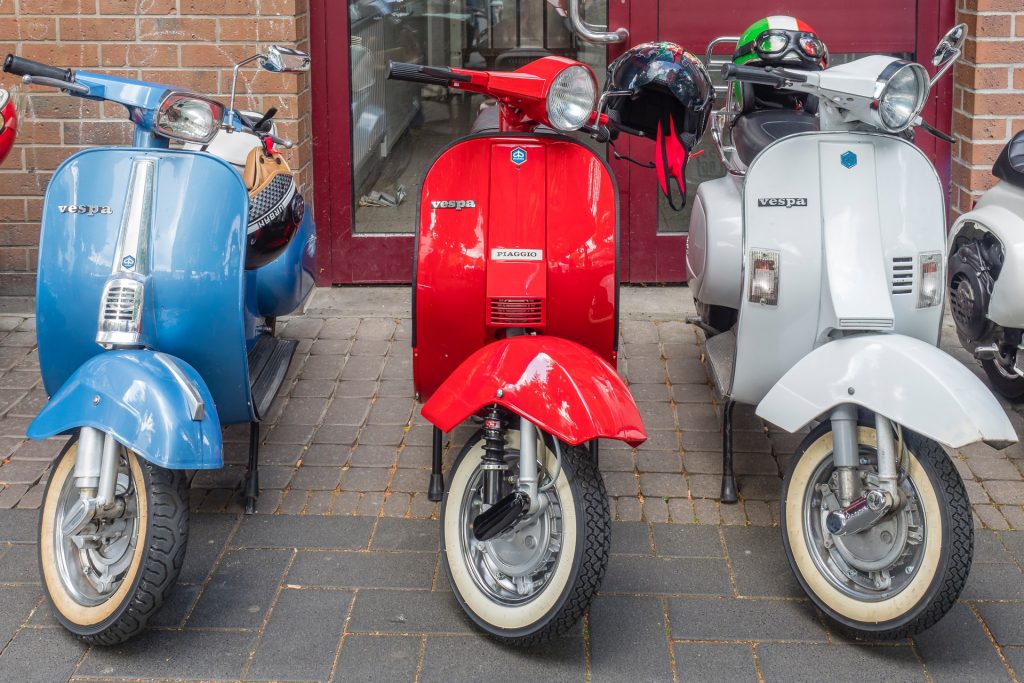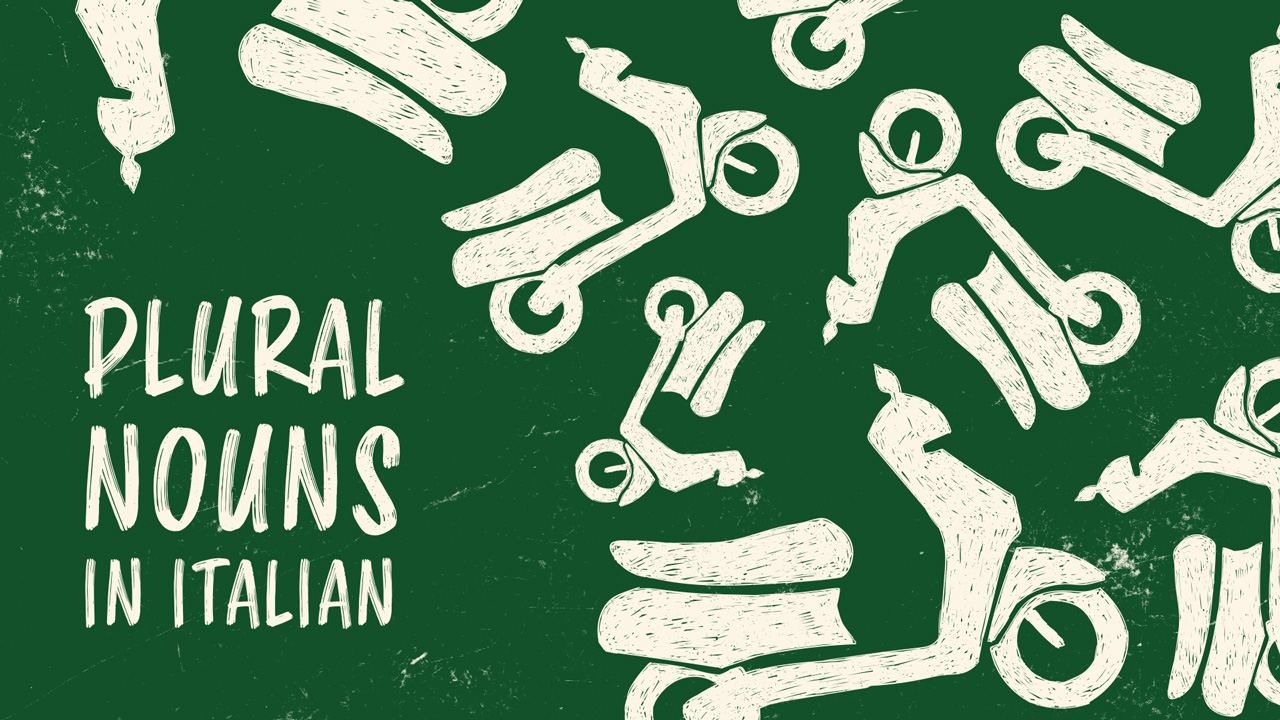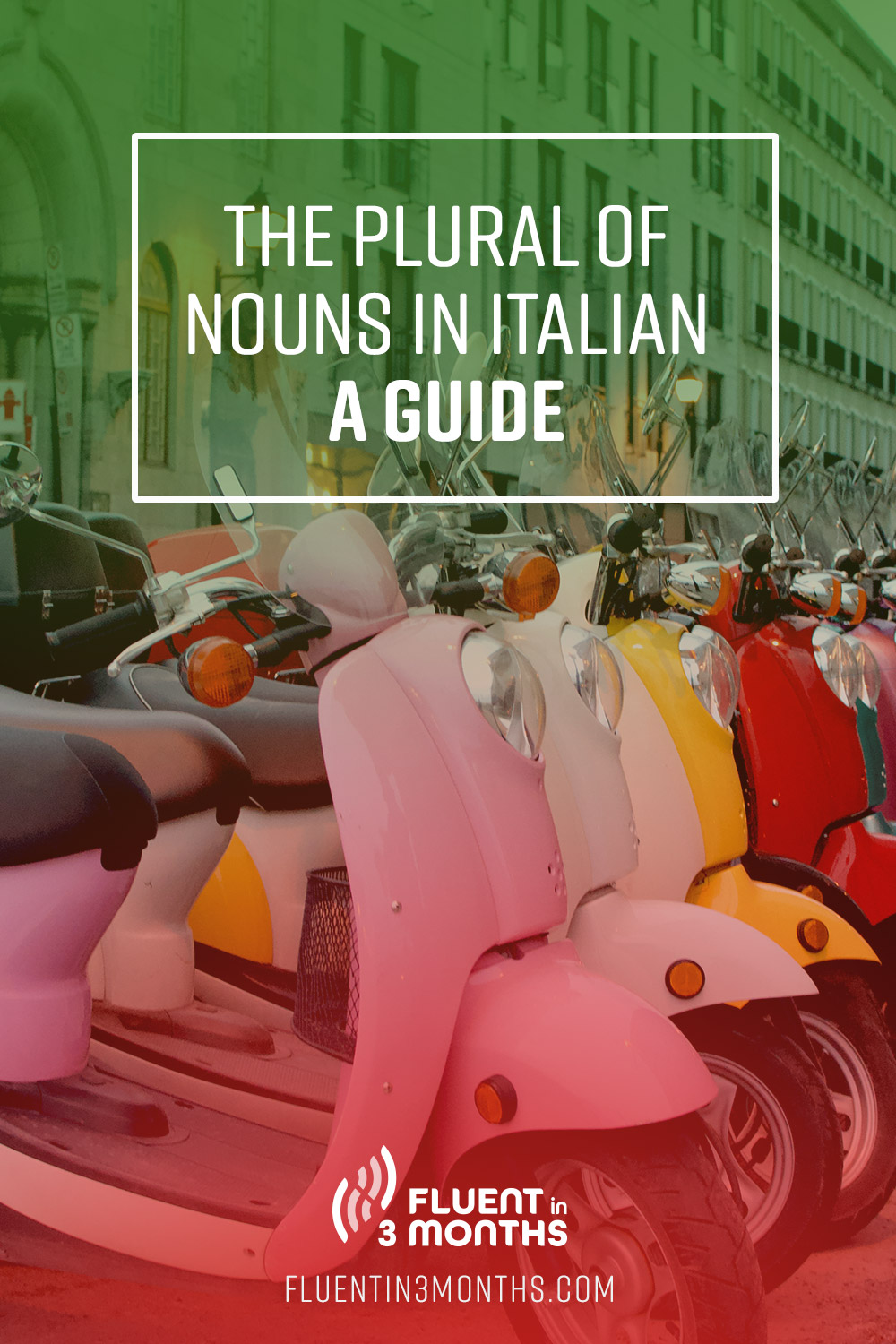How to Form Plural Nouns in Italian – An Extensive Guide [With Examples]
If you want to be fluent in Italian, or at least make people believe that you are able to speak like a native speaker would, you need to learn how to form plural nouns.
One of the things that gives away the fact that you're not able to fully speak a specific language is getting plural nouns wrong. Especially if you're speaking languages such as Italian, French, or Spanish.
In this post, I will help you learn how to form the plural forms for Italian nouns.
Why Learning to Form Plural Nouns in Your Target Language Will Make You a Better Speaker

The language we're focusing on is Italian. But first, I want to make you understand why learning how to form plural nouns is a crucial step in the learning process of your target language.
Let's say you're speaking with an Italian native speaker and you're speaking perfectly. Your accent is great and so is your grammar.
But what happens when you use a singular noun instead of the plural? You completely give away the fact that Italian is not your first language.
Making mistakes is part of the process of learning a new language. But let’s be honest. Wouldn’t you rather make as few mistakes as possible?
This is why learning how to form plural nouns is important.
Now we're going to learn how to do it in Italian. In the following paragraphs, I will give you some examples, and we'll talk about a few exceptions.
The last section will be dedicated to a few tips and tricks to make your life easier and your learning process quicker.
As you know, the main aim of Fluent in 3 Months is always to help you find the best way to learn a foreign language!
The Rules for Forming Plural Nouns in Italian
In the Italian language, plural nouns are formed by changing the variable element of the noun found at the end of each word.
Usually, the last letter of any word in Italian indicates the gender and the number of the noun. It's important to learn how to recognize the gender of the noun first.
Nouns are divided into three categories:
1. First category – Nouns ending in -o
These nouns are usually masculine and form the plural with -i.
- cavallo (“horse”) → cavalli (“horses”)
There aren't many feminine nouns that end with -o in the Italian language. One of them is la mano (“hand”) whose plural is le mani.
2. Second category – Nouns ending in -a
These nouns are usually feminine and form the plural with -e.
- casa (“house”) → case (“houses”)
3. Third category – Nouns ending in -e
These nouns can be masculine or feminine and form the plural with -i.
- masculine: ristorante (“restaurant”) → ristoranti (“restaurants”) feminine: canzone (“song”) → canzoni (“songs”)
As you can see, the standard form is easy and you just need to learn a few rules.
It might seem complicated because Italian is not your first language, but once you get the hang of it, learning how to form plural nouns will be the easiest thing you have learned so far.
It is also essential to have a basic knowledge of a few things, though: articles, gender of the noun, and so on.
As previously stated, being able to form plural nouns and using the correct noun in a sentence is that extra step that will make you sound like a native speaker, so keep practicing!
Plural Nouns in Italian: Learn the Exceptions to Speak More Confidently

We've talked about the three categories into which the plural nouns are divided, but there is another category we haven’t talked about
In the fourth category, we can find all the rebel words. They might seem like regular nouns, but they require you to not follow the rules mentioned above.
Have a look at the list of exceptions below:
1. All the words that end with the suffix -ista
These words can be masculine or feminine.
If they are masculine, the plural is formed by getting rid of the -a and adding an -i. If they are feminine, they form the plural with -e.
For instance, the word chitarrista (“guitarist”) becomes chitarristi if we refer to male guitarists, but it becomes chitarriste if we refer to female guitarists.
The same thing happens with the words batterista (“drummer”), dentista (“dentist”), artista (“artist”), and so on.
2. Singular feminine nouns that end in -si
These don’t change in the plural form. For instance, the plural form of crisi (“crisis”) is crisi (plural), the plural form of analisi (“analysis”) is analisi, and so on.
3. Singular feminine nouns that end in -o
They don’t change in the plural form either. But that’s only for the feminine nouns!
For instance, the plural form of auto (“car”) is auto, the plural form of radio (“radio”) is radio, and so on.
(Note: the word auto can also be written as automobile, and in the plural form, it becomes automobili.)
Careful though! This exception only applies to feminine nouns ending in -o. Remember that masculine nouns ending in -o form the plural with -i: cavallo → cavalli
4. Masculine nouns that end in -io
Because of the rule that we just restated, you might think that masculine words that end in -io would form their plural with -ii. However, they have the plural with -i, with just one -i.
For instance, the word giornalaio (“newsagent”) becomes giornalai, orologio (“watch, clock”) becomes orologi, and so on.
5. Some masculine nouns that end in -a
Their plural form ends in -i
You have to learn which ones they are. For instance, the word poeta (“poet”) becomes poeti, problema (“problem”) becomes problemi, and so on.
6. The nouns that end in -tà
Their plural is formed with -tà. For instance, the plural form of the word città (“city”) is città, the plural form of the word difficoltà (“difficulty”) is difficoltà, and so on.
7. The nouns that end in -tù and -sù
Similar to words that end in -tà, this group’s plural stays the same, so -tù.
For instance, the plural form of the word gioventù (“youth”) is gioventù, the plural form of the word tiramisù (tiramisu is a typical Italian dessert) is tiramisù, and so on.
8. Foreign words that end in -s, -r, or -t
These plurals end in -s, -r, or -t. For instance, the plural form of the word computer (“computer, laptop”) is computer, the plural form of the word autobus (“bus”) is autobus, and so on.
9. Feminine nouns that end in -ca
These nouns form the plural with -che. For instance, the word amica (“friend”) becomes amiche, fatica (“effort”) becomes fatiche, etc.
10. Masculine nouns that end in -co
Their plural ends in -ci. For instance, the word amico (“friend”) becomes amici, manico (“handle”) becomes manici, etc.
11. Feminine nouns that end in -ga
Their plural ends in -ghe. For instance, the word alga (“algae”) becomes alghe, piaga (“sore, wound”) becomes piaghe, and so on.
12. Masculine nouns that end in -go
Their plural ends in -ghi. For instance, the word mago (“wizard”) becomes maghi, ago (“needle”) becomes aghi, and so on.
13. Nouns that end in -cia and -gia
If preceded by a consonant, nouns that end in -cia and -gia have a plural form that ends in -ce and -ge respectively.
For instance, the word arancia (“orange”) becomes arance, scheggia (“splinter”) becomes schegge, and so on.
If preceded by a vowel, nouns that end in -cia and -gia have a plural form that ends in -cie and -gie.
For instance, the word camicia (“shirt”) becomes camicie, ciliegia (“cherry”) becomes ciliegie.
Example Sentences of How to Use Plural Nouns in Italian
Now that you know all the categories and exceptions, I’ll give you some examples with the words we covered.
- Una delle mie città preferite è Londra! – “London is one of my favorite cities!”
- Di quanti aghi hai bisogno? – “How many needles do you need?”
- Quel negozio vende un sacco di orologi! – “That shop sells a lot of watches!”
- Tra tutte le amiche che ho, tu sei la mia migliore amica. – “Among all the friends I have, you're my best friend.”
- Non ci credo! Tutti i manici sono rotti! – “I can't believe it! All the handles are broken!”
- I batteristi hanno un certo fascino! – “Drummers are fascinating!”
- Ho comprato un sacco di auto negli ultimi dieci anni. – “I've bought tons of cars in the last ten years.”
- I poeti migliori erano quelli che parlavano d’amore. – “The best poets were those who wrote about love.”
- Questi problemi di matematica sono molto difficili! – “These math problems are so complicated!”
Tips on How to Best Form Plural Nouns in Italian
I’ve given you the basic rules, the exceptions, and a few examples. Now, I’m going to provide you with some tips on forming the Italian plural form.
Know Your Italian Articles
The first thing you need to review is indefinite and definite articles.
To form the plural of nouns in Italian, you need to know if a singular noun is feminine or masculine. A good way to identify this is by recognising the article that precedes the noun.
Nouns in Italian are almost always preceded by an article which agree in number and gender with the noun.
In short, il and lo are the definitive articles for masculine singular nouns. La is the definitive article for feminine singular nouns.
Un and uno are the indefinite articles for masculine singular nouns. Una and un’ are the indefinite articles for feminine singular nouns.
Take It Easy With Borrowed Words
Another trick is to find out and learn which words come from another language.
Borrowed words in the Italian language usually end with a consonant. Those are more words that do not change in the plural form.
You can find a few of these words in the previous paragraphs.
Quick Hack: Spot the Accented Words
Accented words are also invariable!
In the Italian language, accents are almost everywhere: à, è, é, ì, ò, ù. When there is an accented letter at the end of a noun, the plural looks exactly like the singular form.
Just make sure that the word you're looking at is a noun and not a verb.
The Funny Plurals of Body Parts
If you’re looking for funny exceptions when forming Italian plural nouns, look for them in body parts.
Don't be tricked by the word dito (“finger”), because the plural of dito is dita, NOT diti! Braccio (“arm”) becomes braccia, NOT bracci!
Interestingly enough, their gender also changes: dito and braccio are masculine nouns, but dita and braccia are feminine nouns.
A Pronunciation Note
Be careful with how you pronounce ga/ghe and ca/che!
With ca/che: the c and ch sound the same as the “c” in the word “can”, so it's KA and KE, not CHA and CHE.
It's the same with the g and gh in ga and gheThey sound like “gate”, so it's GA and GHE, not JA and GE!
That’s It!
These are all the tips and tricks for forming plurals in Italian. You might be intimidated by all these rules but the truth is, not even Italian native speakers know all the rules! They make mistakes too, and remember that making mistakes is part of the learning process as well. Just review your articles, and you'll be fine.
If you want to discover more about the Italian language, have a look at our list of resources for learning Italian.




Social